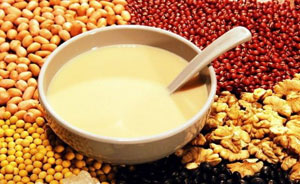How Is Molybdenum Used In Modern Industries
The principal application of molybdenum is in the iron and steel industry, which accounts for approximately 80% of total molybdenum consumption. The chemical industry represents around 10% of consumption. In addition, molybdenum is employed in the electrical and electronics industry, medicine, agriculture and other sectors, which together account for approximately 10% of total usage.
Alloy Section
Molybdenum is primarily consumed in the iron and steel industry. It is used in the production of alloy steel, stainless steel, tool steel, high-speed steel and cast iron rollers. Most molybdenum oxide is directly incorporated into steel or cast iron. A small fraction is melted with iron and is subsequently used for steel production. As an alloying element, Mo increases steel’s strength and toughness; it enhances corrosion resistance in acidic solutions and liquid metals; it improves wear resistance; and it increases weldability and heat tolerance during quenching. For example, stainless steel containing 4–5% molybdenum is commonly employed in ship equipment and chemical apparatus.

The addition of molybdenum to elements such as titanium, zirconium, hafnium, tungsten and rare earth elements produces non-ferrous alloys. These elements form a solid solution with molybdenum. They also produce a stable, dispersed carbide phase. This increases the strength of the alloy and raises the crystallisation temperature. Molybdenum-based alloys are used for high-temperature heating elements, extrusion tools, glass furnace electrodes, spray coatings, metal processing tools and aerospace components.

Chemical Industry
Lubricants: Molybdenum oxide is an effective dry lubricant. Its friction coefficient is low and its yield strength is high. It performs in a vacuum, at ultra-low temperatures and at high temperatures. It is employed in gas turbines, gearboxes, moulds, the aerospace sector, the nuclear industry and other fields.

Catalysts: Molybdenum compounds are among the most frequently used catalysts. They are used in the chemical, petroleum, plastics, textiles and other industries. Under certain conditions, molybdenum disulphide exhibits anti-sulphur properties. It is produced via catalytic hydrogenation of carbon monoxide alcohols. C1 is a promising chemical catalyst. Other common molybdenum catalysts include molybdenum disulphide, molybdenum oxide, molybdate and ammonium molybdate.
Colour: Chromatic yellow and cadmium yellow are the most widely used inorganic yellow pigments globally. However, lead, chromium and cadmium are toxic. Molybdenum yellow is non-toxic. It has a bright colour, low density and good thermal stability, which allows its use in paints and inks, plastics, rubbers and ceramic products.
Flame retardants and smoke suppressants for organic polymers: The addition of 3–4% MoO3 to halogenated polyesters increases the limiting oxygen index by 3–4%. The carbon yield during combustion increases by approximately 4%. Smoke production is reduced by 3%.
Corrosion inhibitors: Molybdate has low toxicity and exerts minimal corrosive effects on organic additives. It is commonly used in the construction of cooling water and heating systems for air conditioning to prevent corrosion of low-carbon steel.
Electrical and Electronic Sectors
Molybdenum has good electrical conductivity and high temperature resistance. Its coefficient of thermal expansion is comparable to that of glass. It is used to manufacture core wires, supply wires and supports for spiral filaments. Molybdenum wire is also used as an electrode wire in WEDM. It cuts various types of steel and hard alloys. It remains stable during discharge and improves tool precision.

Single-layer molybdenum nitride materials possess good semiconducting properties. Some properties exceed those of silicon and graphene. They are expected to be used in future semiconductor applications. The California Institute of Nanotechnology produced a molybdenum-based flexible micro-processing chip using MoS2. The chip is 20% the size of a comparable silicon chip. The graphene device has the same dimensions and is less expensive. The device is flexible, thin and can be attached to human skin.
Medical Sector
Molybdenum is an essential trace element in the human body. It is a constituent of many enzymes. It participates in interactions among sulphur, iron and copper. Adequate levels of molybdenum promote human development, enhance in vivo oxygen storage, inhibit tumour formation, maintain energy metabolism and protect the myocardium. A deficiency in molybdenum can result in dental caries, kidney stones, Keshan disease, Kaschin–Beck disease, oesophageal cancer and other conditions. In medicine, molybdenum is used in formulations such as ammonium molybdate, which is prescribed for patients dependent on long-term intravenous nutrition.

Animal Husbandry
The biological effect of molybdenum depends on the activity of certain enzymes. It influences the composition of molybdenum-containing enzymes in animals. In ruminants, molybdenum contributes to nitrate metabolism in the rumen by acting as a component of nitrate oxidase during microbial transformation. It also serves as a cofactor of molybdenum sulphate oxidase, which stimulates ruminal microorganisms. This assists in the digestion of fibrous materials and promotes ruminant growth. When feed is deficient in molybdenum, additives are incorporated to meet nutritional requirements. An example is the supplementation of 10 mg/d in dairy cattle feed.
Agriculture
Molybdenum is an essential trace element for plants. A deficiency can restrict normal plant growth. It promotes the absorption of phosphorus and accelerates the formation and conversion of alcohols in plants. It increases the levels of chlorophyll and vitamin C. It also improves plant resistance to drought, cold and diseases. Given its importance, many countries have begun producing and using trace amounts of molybdenum-containing fertilisers.


 Bars
Bars
 Beads & Spheres
Beads & Spheres
 Bolts & Nuts
Bolts & Nuts
 Crucibles
Crucibles
 Discs
Discs
 Fibers & Fabrics
Fibers & Fabrics
 Films
Films
 Flake
Flake
 Foams
Foams
 Foil
Foil
 Granules
Granules
 Honeycombs
Honeycombs
 Ink
Ink
 Laminate
Laminate
 Lumps
Lumps
 Meshes
Meshes
 Metallised Film
Metallised Film
 Plate
Plate
 Powders
Powders
 Rod
Rod
 Sheets
Sheets
 Single Crystals
Single Crystals
 Sputtering Target
Sputtering Target
 Tubes
Tubes
 Washer
Washer
 Wires
Wires
 Converters & Calculators
Converters & Calculators
 Write for Us
Write for Us
 Chin Trento
Chin Trento



